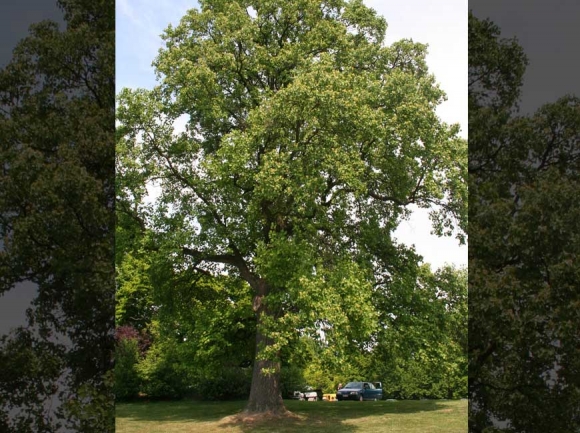My source is W. Clark Medford, a local historian who resided in Haywood County.
Medford wrote columns for the local newspaper, many of which were reissued in a series of books. He describes the cabin in Mountain People, Mountain Times (Asheville: Miller Printing Company, 1963). At the end of his account, which was titled “One Tree Made One Cabin,” Medford cites “Bob Terrell in Citizen-Times”; so, it seems apparent that some of Medford’s information was garnered from one of Terrell’s columns. But Medford’s account seemingly implies that he also saw the cabin.
I’ve encountered many large poplar trees in Western North Carolina, especially at Joyce Kilmer Memorial Forest near Robbinsville, but I don’t think I’ve ever seen one large enough to build a cabin from. The cabin in question was two log structures connected by a dogtrot. The larger structure served as living quarters. It measured 24-by-18 feet, with one of the wall logs standing 36 inches. It required but three logs per wall.
The inside walls were smoothed to a wallpaper-like finish via the deft use of a broadax. The windows were carved by ax and chisel and described as being “works of art, as tight-fitting as modern steel frames.” Several small holes bored in a line were used to hold a loom. A rock chimney chinked with mud may have been added after the original construction.
Related Items
The adjoining cabin served as a kitchen. It was originally equipped with an open fireplace, but a hole was subsequently cut in the roof so that a stove with a stovepipe could be installed. The roof was comprised of wooden shingles hued by a frow.
At least four generations of Wikles lived in the cabin, the last family of them being headed by Hix Wikle, a logger. He sold the cabin about 1960 to Ed Bumgarner, the proprietor of Sunset Farms — an old-time inn located perhaps five miles east of Whittier.
In 1963 Hix Wikle recalled that “old man Stance Jones helped build the cabin when he was 16. He’s the great-grandfather of Early Jones, who lives on the middle prong of the creek, and early is 56 …. My father, A.N. Wikle, lived and died in the old house, and my grandfather, John Wikle, lived and died there, too. I’m 46 and lived in it 43 years. My grandfather bought it from Sarah Jane Sawyer. I don’t know if she was the first one to live there. I just know it’s old, and I know it’s a mighty good house. It’s just a mite too far back and too hard to get to now.”
Utilizing this rather jumbled genealogical data, Medford calculated (I’m not sure just how) that the cabin was “something more than 100 years” old at the time his book was published. The cabin itself was described in a very general way as being situated west of Rocky Gap on the Middle Prong of Barker’s Creek. That would place it in Jackson County some miles south of the Tuckasegee River about midway between Sylva and Whittier.
I’d be obliged if someone out there could provided specific directions to the site. And I’d be thrilled if the old cabin built from one tree is still there to be examined.
(George Ellison is a naturalist and writer. He can be reached at This email address is being protected from spambots. You need JavaScript enabled to view it..)




